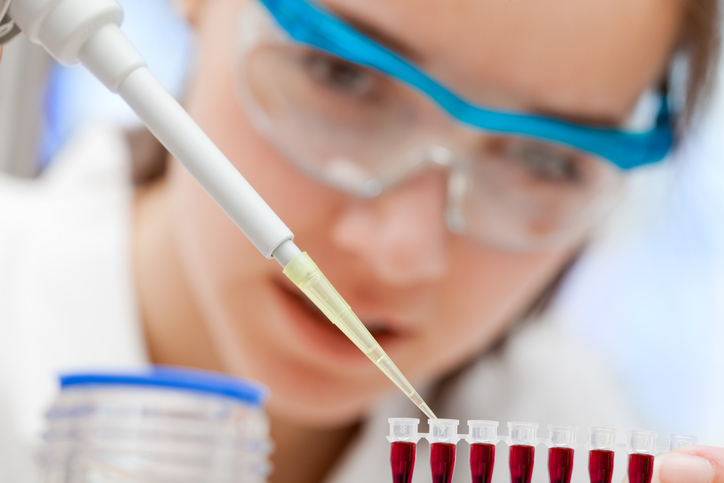Monoclonal Antibodies vs Polyclonal Antibodies: what are the differences and how they will affect your experiments
Monoclonal antibodies vs Polyclonal antibodies: The different production processes
Both polyclonal and monoclonal antibodies share a huge number of applications, such as IHC and WB, in common. However, the very nature of how they are produced can often make one more suitable for a given application over another.
So what are the difference in their production? And how does this affect their various features?
The Polyclonal Antibody Production Process
In nature, the primary immune response to a foreign antigen involves the activation of large numbers of B-cells to protect the body.
Each B-cell targets a single antigen, and produces antibodies against a specific epitope of that antigen. The result is the production large numbers of antibodies, each with different specificities and epitope affinities, known as ‘polyclonal antibodies’.
Polyclonal antibodies can be raised in many different species, such as goats, sheep, or rabbits. To do this, the animals are typically immunized with a specific antigen to elicit an immune response. This is usually followed by further immunizations to boost the levels of circulating antibodies – the titer. Following this, the serum containing the desired antibodies is collected. This is then typically enriched using affinity purification.
This process – multiple immunizations followed by affinity purification – ultimately lends itself to the production of high titer, high-affinity polyclonal antibodies against the antigen of interest.
The Monoclonal Antibody Production Process
Monoclonal antibodies are created with a single B-cell clone from one animal, generating antibodies to a single specific epitope. The first stage in monoclonal antibody production is through immunization of an animal – which, for a number of reasons, tend to be mice. The antibody producing B-cells are isolated from the spleen and lymph nodes of the immunized animals and grown, or cultured, in the laboratory. However, these cells are not immortal, replicating only 50 – 70 times before undergoing senescence and ceasing to produce antibodies. This phenomenon is known as the Hayflick limit, named after Leonard Hayflick after his work in 1961. This is a problem if one wishes to have a long-term source of a specific monoclonal antibody, produced by only one B-cell clone.
In 1975 Georges Jean Franz Köhler and César Milstein developed a technology to fuse mouse myleoma cells with B-cells. The resulting cell type is called a hybridoma. Hybridomas have the characteristics of both B-cells and myelomas. Meaning that not only do they produce a single antibody against a specific epitope, but they can also replicate indefinitely.
An excellent background article into the research of monoclonal antibodies and their discovery by Köhler and Milstein has been produced by WhatIsBiotechnology.org – the article can be found here.
This hybridoma cell line, once stabilized via single cell cloning, can be frozen and stored under liquid nitrogen, allowing the antibody to be produced in vitro, in large quantities when required. Monoclonal antibodies can be raised against many targets. Specific characteristics of an antibody can be identified and selected, e.g. sensitivity requirements and cross reactivity levels can be specified and monoclonal antibodies screened to identify any cell lines exhibiting the required characteristics. Monoclonals can also be generated to cross-react with groups of molecules. For example, tricyclic anti-depressants, which have a similar overall structure with substitutions of differing atoms into the cyclic structure. This is very useful in drug detection when many possible combinations of the drug are to be tested in a patient.
Monoclonal antibodies vs Polyclonal antibodies: Features of Monoclonal antibodies compared to Polyclonal Antibodies
| Polyclonal |
Monoclonal |
| Heterogenous – contains a mixture of antibodies with varying affinities and immunogloblulin subclasses |
Homogenous – a single clone of an antibody with a single affinity and immunoglobulin subclass |
| Detects multiple epitopes of an antigen |
Detects a single specific epitope |
| Tendency for higher background noise |
Low background noise |
| Can be raised in many host species |
Far fewer host species, limited to just mouse, rat and rabbit |
| Variability between batches |
Batch-to-batch consistency |
| Inexpensive and relatively quick to produce |
Expensive to develop and slow to produce |
Monoclonal antibodies vs Polyclonal antibodies: Advantages of Monoclonal antibodies compared to Polyclonal Antibodies
Advantages of Monoclonal Antibodies
As well as long-term yield, monoclonal antibodies are ideal for use in many biological assays and applications for a number of reasons, including:
- They are easier to standardize than polyclonal antibodies, due to much higher consistency between batches, which is important in clinical tests or therapeutic uses, for example.
- High specificity for a single epitope decreases background noise in assays due to lower cross-reactivity; and
- Selection – epitope and affinity specificities, as well as immunoglobulin sub-classes (e.g. IgG1, IgG2 etc), can be selected for.
- Can be used to probe specific domains of an antigen
- Homogeneity of monoclonal antibodies is very high relative to polyclonals. If experimental conditions are kept constant, results from monoclonal antibodies will be highly reproducible between experiments.
- High specificity makes them extremely efficient for binding antigens within a mixture of related molecules, such as during affinity purification.
Advantages of Polyclonal Antibodies
The heterogeneous mix of antibodies, recognizing multiple epitopes on a single antigen, offers polyclonal antibodies a number of advantages, including:
- Amplifying the signal from a target protein with low expression level, as the target protein will bind more than one antibody;
- More tolerant of minor antigen changes (e.g. polymorphism, heterogeneity of glycosylation or slight denaturation) than monoclonals;
- More likely to detect the same antigen between species; and
- Can be useful when the nature of the antigen is unknown
ARP – American Research Products
ARP offers a large portfolio of monoclonal and polyclonal antibodies. To view our monoclonal antibodies click
here, whilst our polyclonal antibodies can be viewed
here.
Every product sold by ARP is covered by our 100% Product Guarantee, so you can evaluate our antibodies with complete peace of mind.
Download PDF :  Filed Under : Antibodies
Filed Under : Antibodies

 Filed Under : Antibodies
Filed Under : Antibodies 






